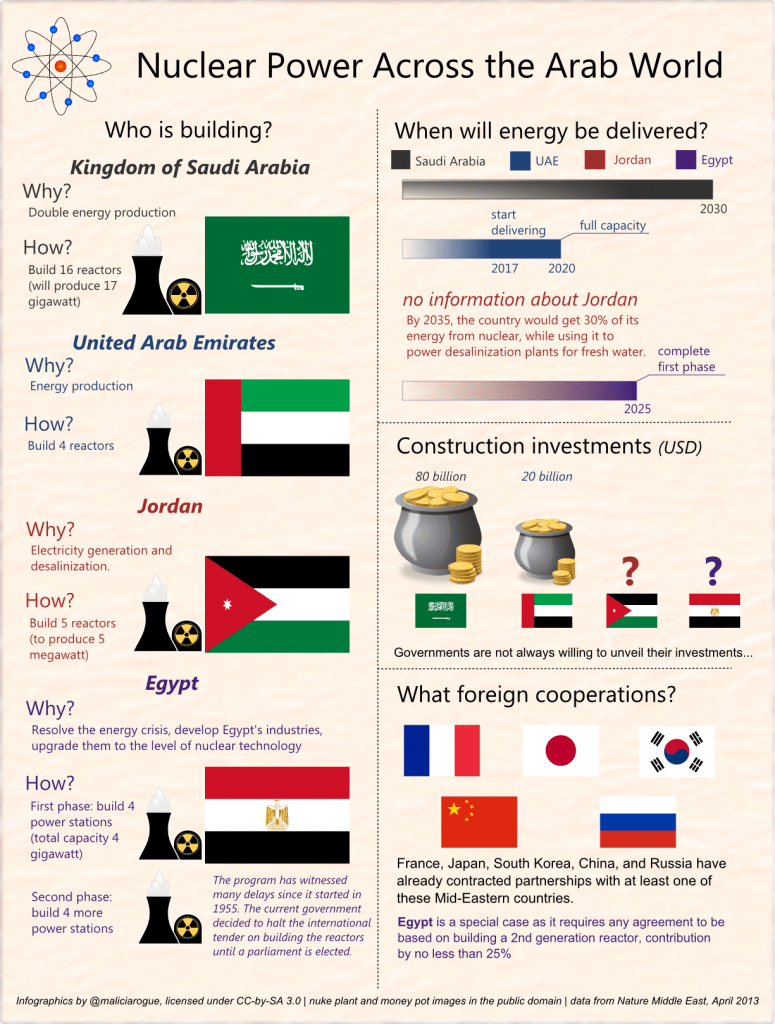I was feeling like wrapping up a few interesting tidbits I stumbled upon earlier. These are all infographics, some are in Arabic. Enjoy 🙂
Tech
Wamda publishes a nice and comprehensive infographic (full size) summing up the ways Jordanians use the Internet. For Arabic-impared, here are a few highlights:
- internet penetration in Jordan is only around 48%;
- of the 1.5 million internet users in Jordan, 90% of women and 87% of men use social networks;
- the vast majority of internet users are men between 20 and 30 years old;
- men spend more time on social networks than women (one hour 37 min vs. 50 min, respectively), but streaming websites — amongst the most popular in Jordan — have equal visit rates;
- Internet users aged above 40 represent 11% of the total number of all internet users in the country.
I have previously written on Jordan (and spoke on radio about it). The most recent piece is here: Jordan Starts Blocking ‘Unlicensed Websites’ (published in Jadaliyya).
Education
I stumbled upon an interesting infographic by the Worldbank, entitled “What Will It Take to Achieve Education for All?”. The infographic doesn’t focus on the Middle East specifically but wraps up global trends. It was published back in April 2013, preparing for the ‘Learning for All’ Ministerial Meeting. The Worldbank Blog published excerpts from the associated social media campaign that I recommed you have a look at.
- إنفوجرافيك: ما المطلوب لتحقيق هدف التعليم للجميع؟ (full size)
- “What Will It Take to Achieve Education for All?” (full size)
I have recently written on more Middle East-targeted education topics: Information Technologies and Education in the Arab World (published in Nature Middle East).
Workplace
Bayt.com, the famous online job search platform, has conducted a poll which saw 9,845 respondents covering the UAE, KSA, Kuwait, Qatar, Oman, Bahrain, Lebanon, Syria, Jordan, Algeria, Egypt, Morocco, and Tunisia. The results are presented in a comprehensive infographic (full size); highlights:
- 20% of job seekers blame the educational system for being ill-prepared for the current job market;
- 54% of professionals are active job seekers who apply regularly (vs. 46% who are passive job seekers, that is they wait for employers to find them);
- 30% of professionals feel the biggest turn-off in a manager is the lack of vision;
- top industries perceived to be employing the most talent are Oil and Gas, & IT and Telecom.




